Vervain Hummingbird
Vervain Hummingbird (Mellisuga minima)
Name Origin:
The genus Mellisuga comes from Latin mel meaning “honey” and sugere meaning “to suck,” describing the nectar-feeding behavior. The species name minima refers to its tiny size—this is the second-smallest bird in the world.
Quick Facts
🪶 Length: 6–7 cm (2.4–2.8 in)
⚖️ Weight: 2.0–2.4 g (0.07–0.08 oz)
🌎 Range: Jamaica, Hispaniola, and nearby offshore islands
🧭 Elevation: Sea level to 2,000 m (6,600 ft)
🌸 Diet: Nectar and small insects
🏡 Habitat: Open woodlands, gardens, and scrub
🧬 Clade: Mellisugini – Bees
📊 Status: Least Concern (IUCN 2024)
Subspecies & Distribution
Two subspecies:
Mellisuga minima minima
Distribution: Endemic to Jamaica. Found from coastal scrub to forested highlands.Mellisuga minima vielloti
Distribution: Hispaniola and surrounding islands, including Tortue, Gonâve, Vache, Catalina, and Saona. Common in open habitats and urban gardens.
Species Overview
The Vervain Hummingbird is one of the tiniest birds on Earth, often mistaken for a large bee due to its size and erratic flight. Despite its diminutive stature, it is assertive around food sources. Plumage is mostly green with faint iridescence, a short straight black bill, and grayish underparts. Males are slightly more iridescent but similar to females. The tail is short and squared, lacking strong sexual dimorphism.
Male Description:
Males are metallic green above with light gray underparts. Iridescence can vary with light. The throat and crown have a slight bluish gloss, especially in direct sunlight.
Female Description:
Females resemble males but with duller throat and crown, often appearing more uniform gray below. The bill is slightly curved at the tip.
Habitat & Behavior:
Often found in gardens, forest edges, and lowland scrub, the Vervain Hummingbird perches low and hovers rapidly while foraging. It feeds from tiny flowers and picks insects mid-air. Vocalizations are high-pitched and insect-like, especially during display flights. Males defend small feeding areas, and both sexes exhibit fast, direct flight.
Conservation Note:
This species is widespread and common throughout its range, thriving in both wild and human-altered habitats. Although populations are stable, ongoing habitat monitoring is important, especially on smaller islands where environmental changes can be abrupt.
Below is the Vervain Hummingbird (Mellisuga minima vielloti)
Photographed at Jardín Botánico Nacional, Distrito Nacional (Santo Domingo), Dominican Republic
These individuals belong to the subspecies vielloti, found throughout Hispaniola and its associated satellite islands. This form is similar in appearance to the nominate Jamaican subspecies but may show slightly less vivid iridescence. Both males and females exhibit the typical tiny, metallic-green body and short tail characteristic of the species.
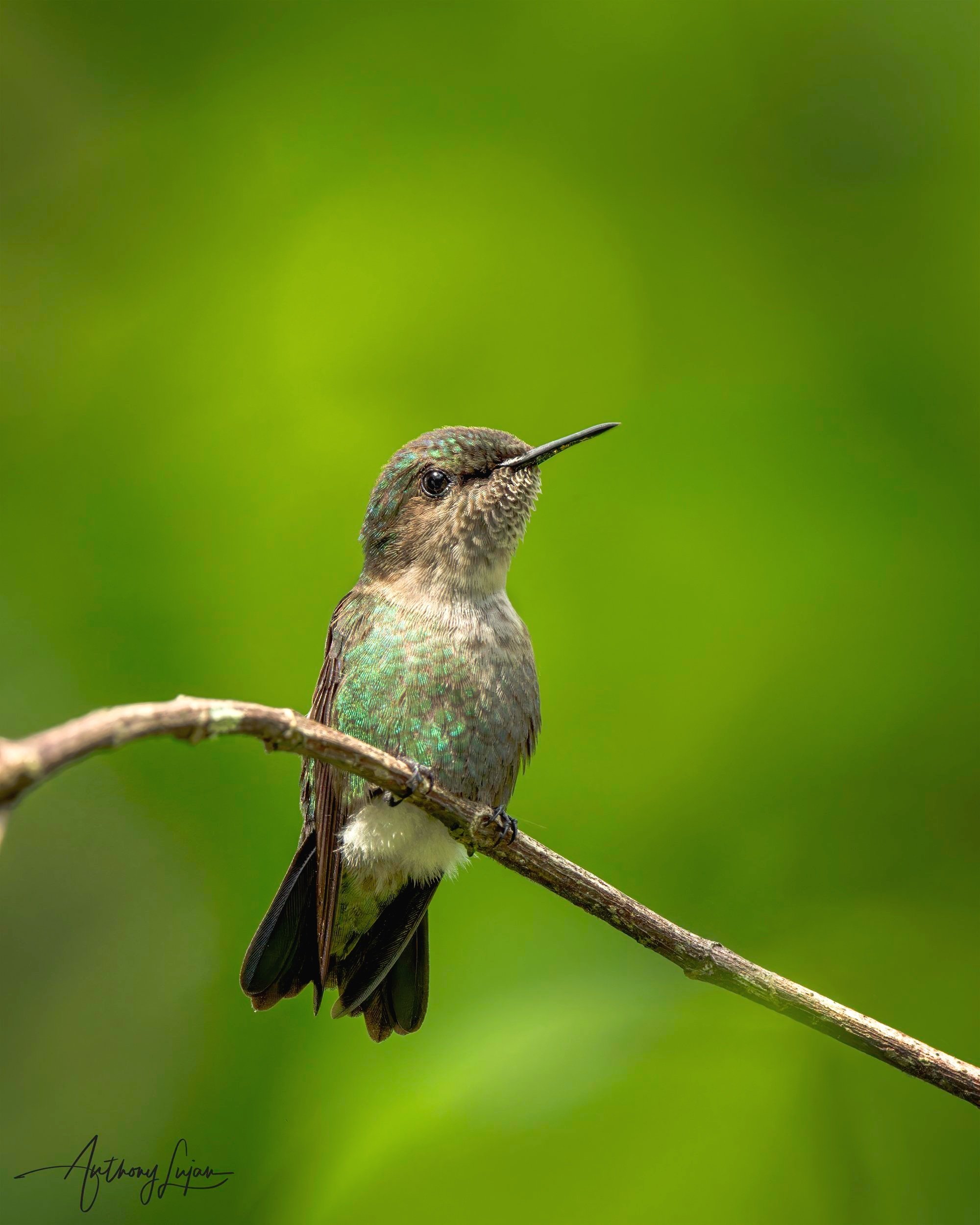
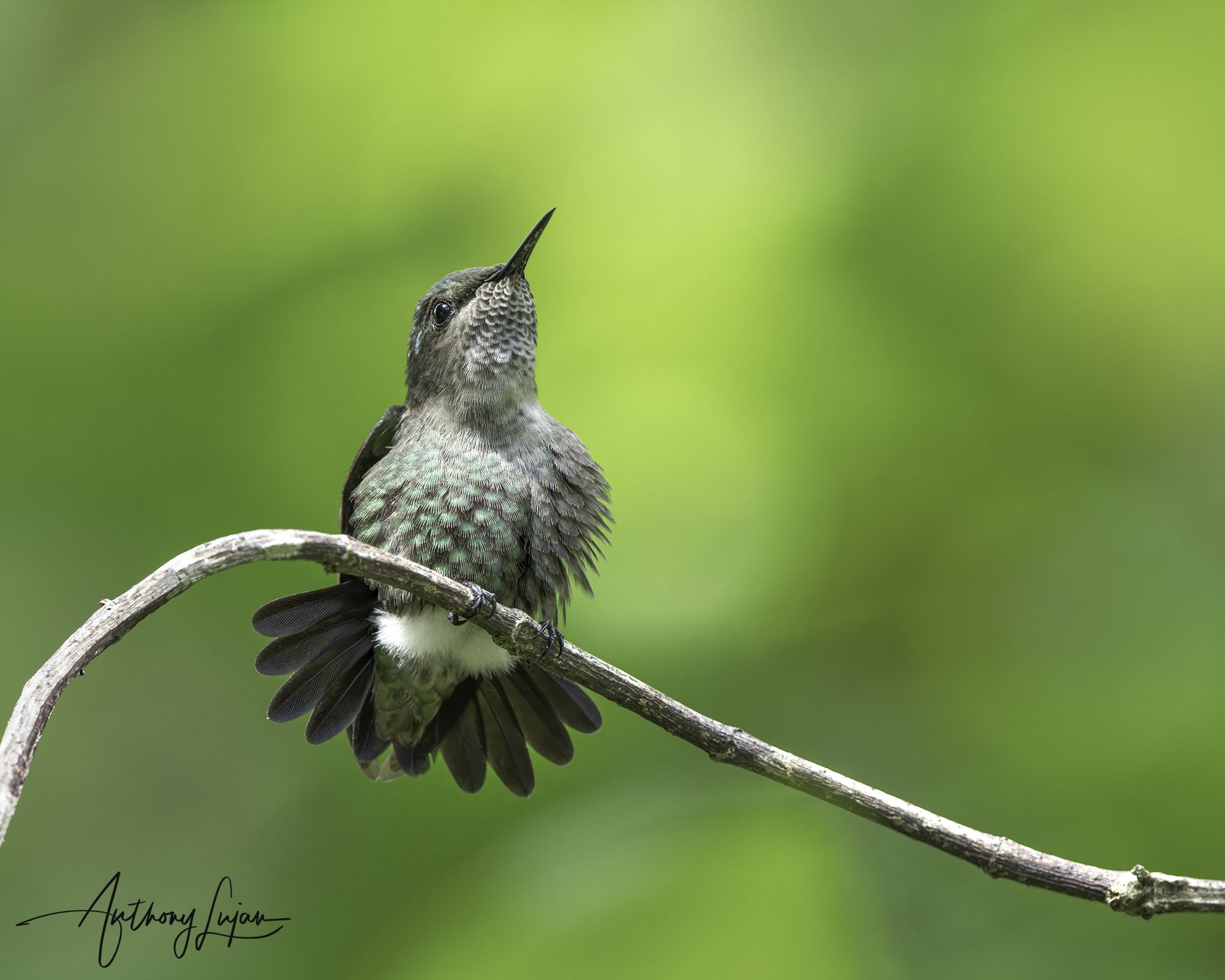
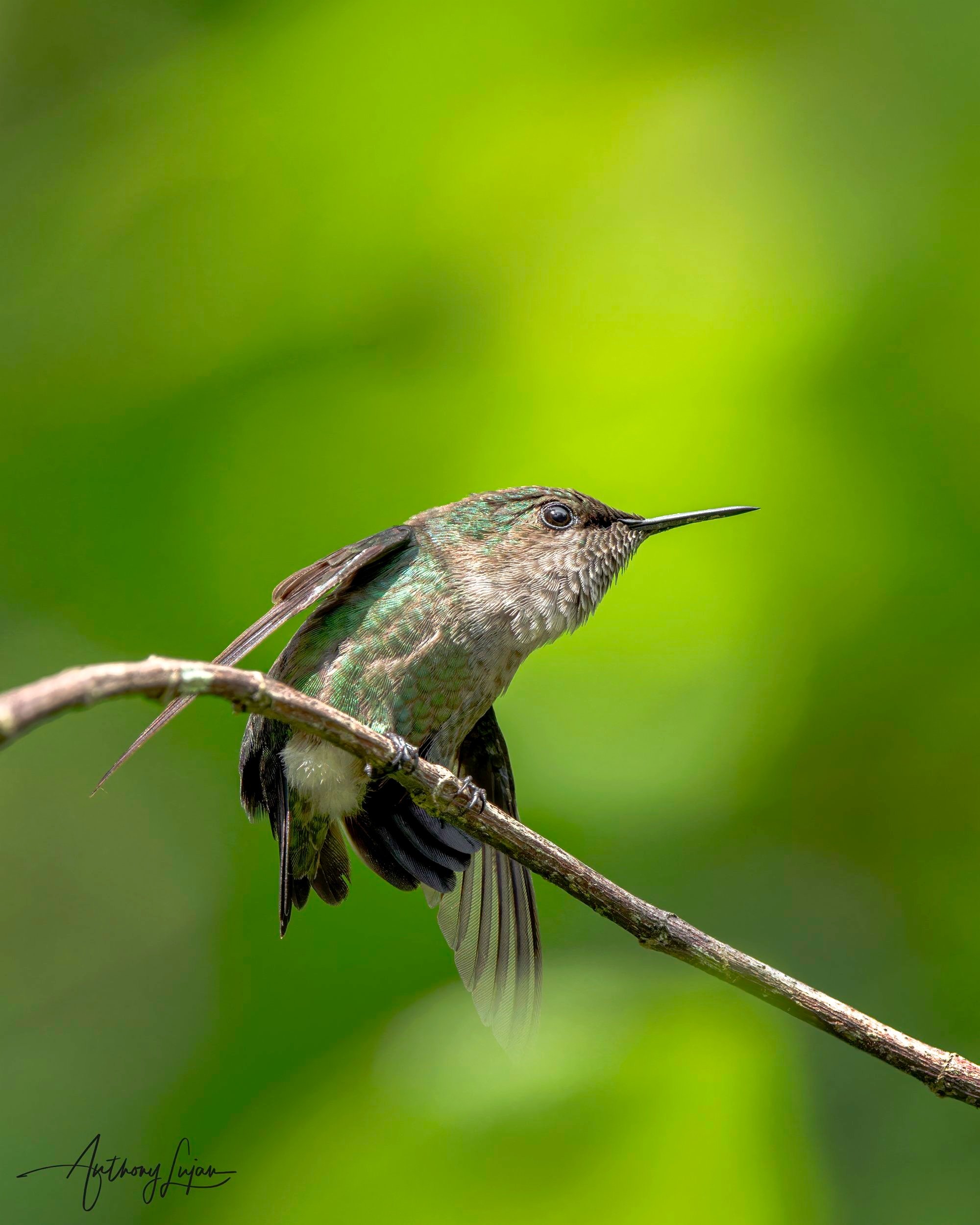
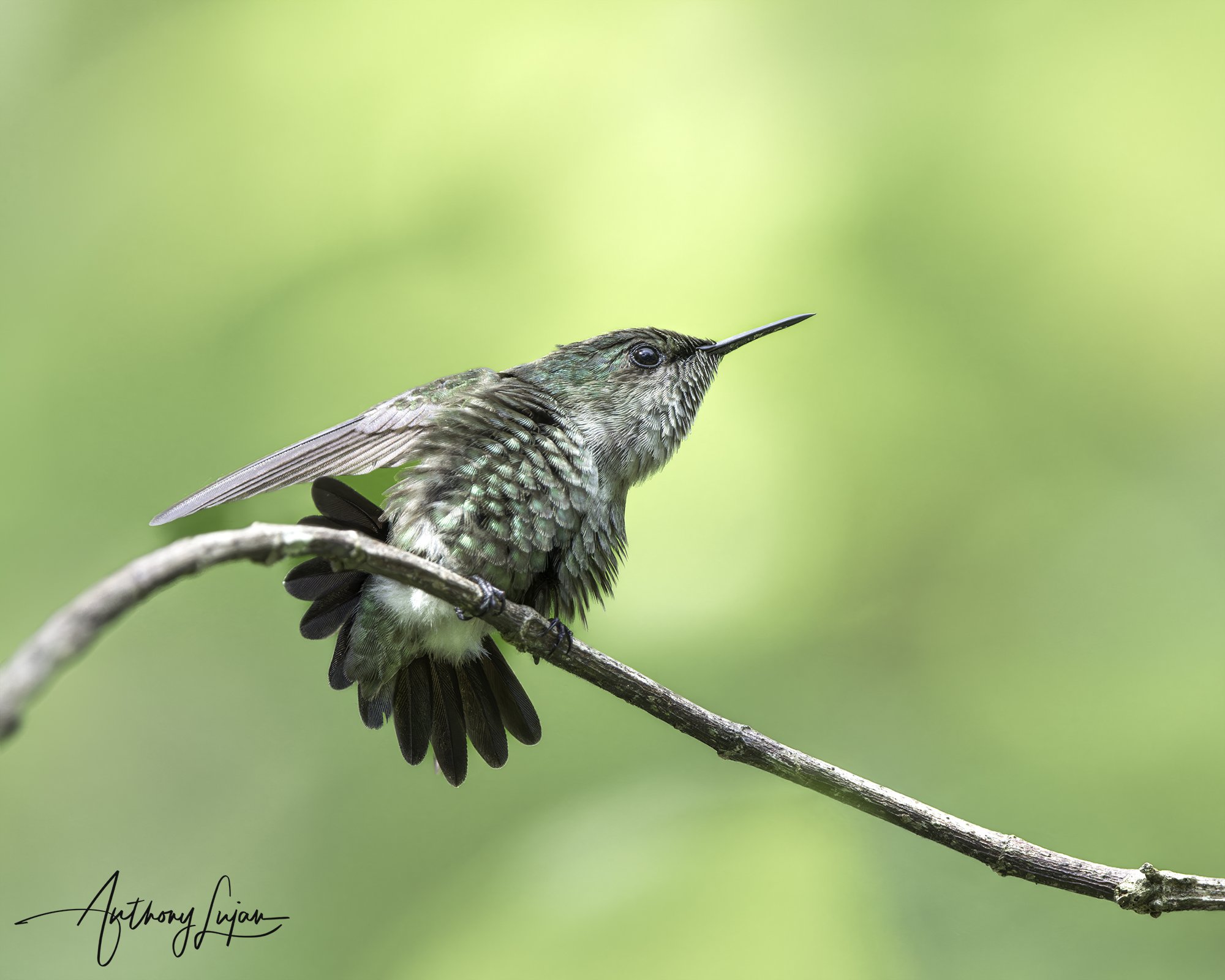
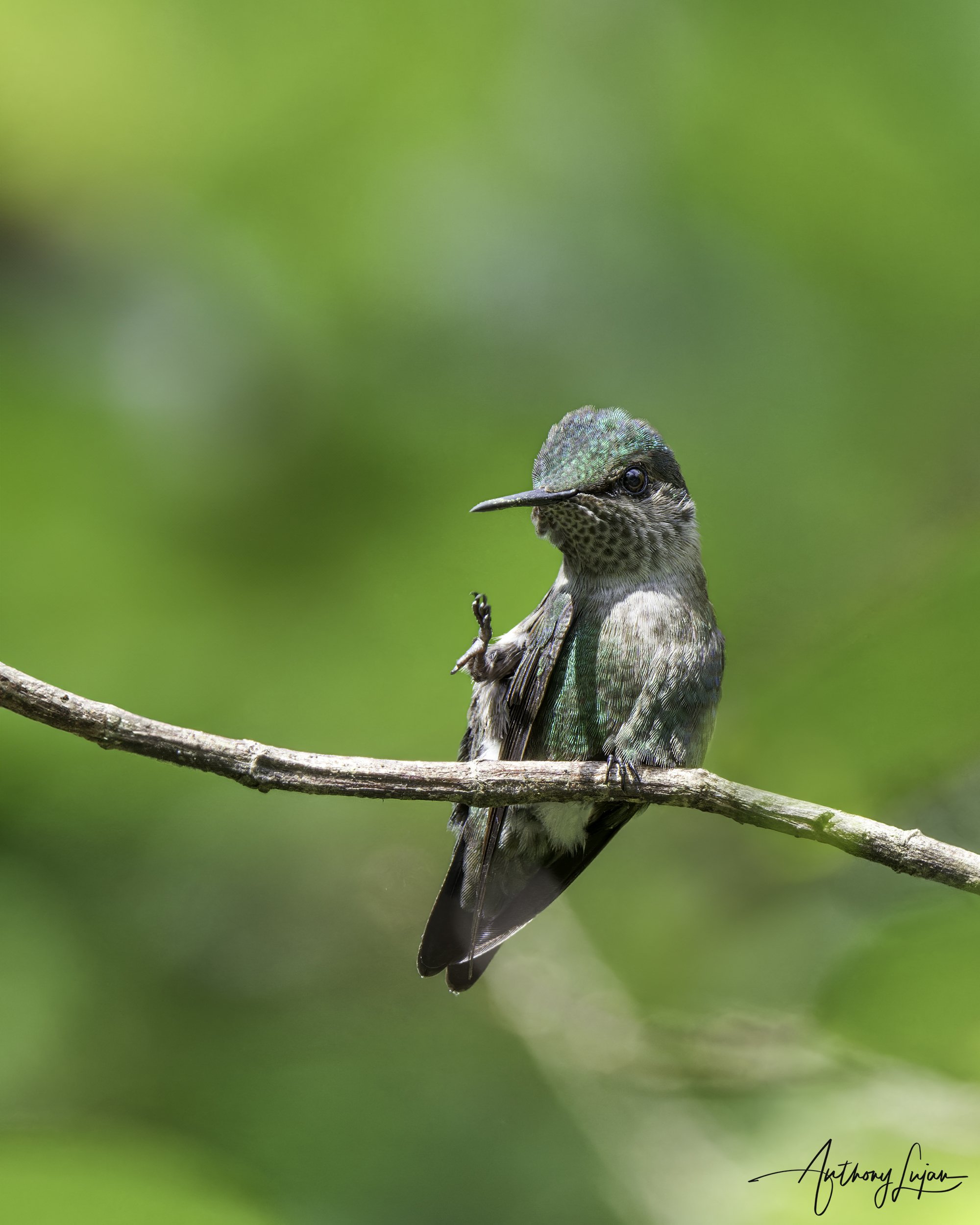

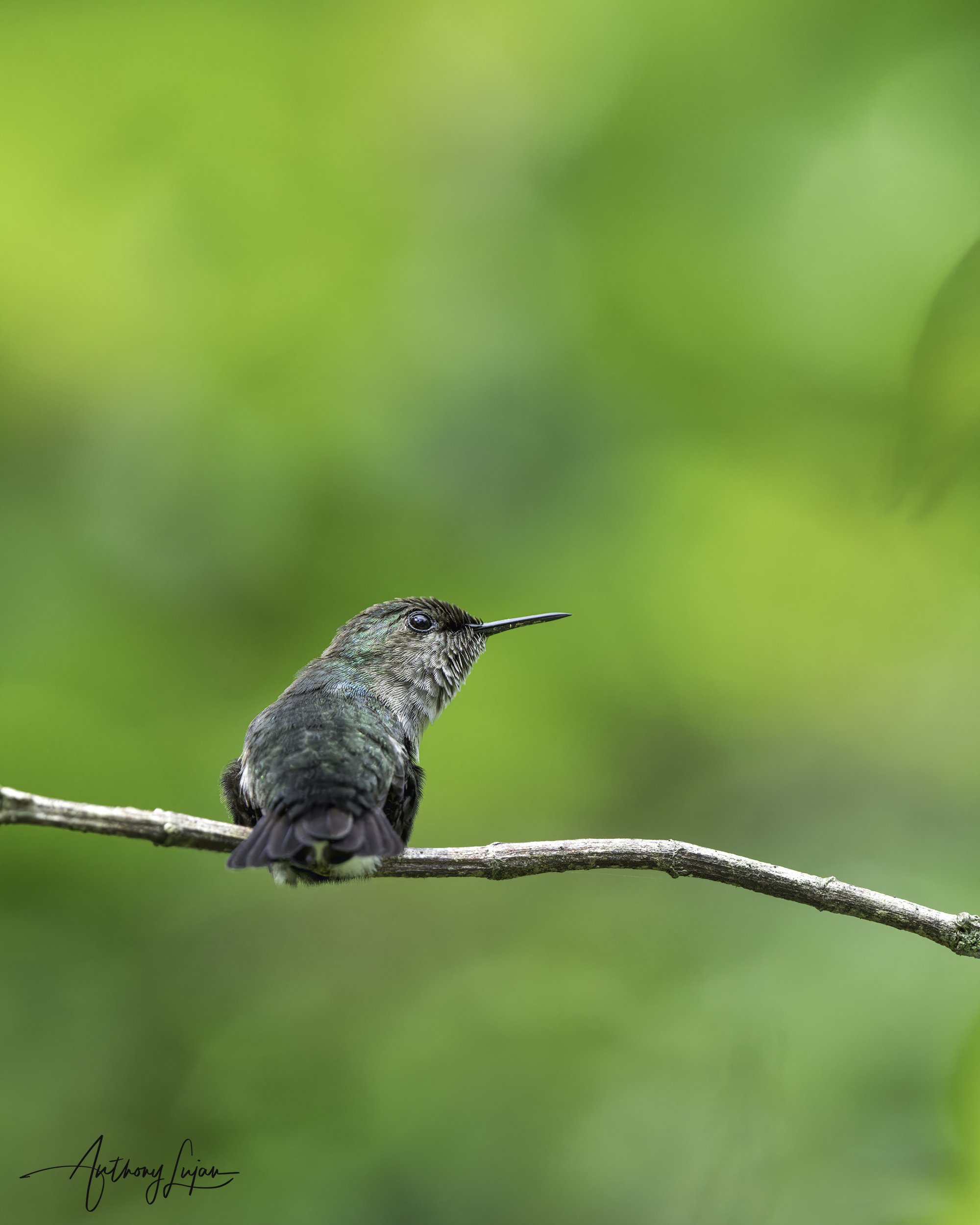
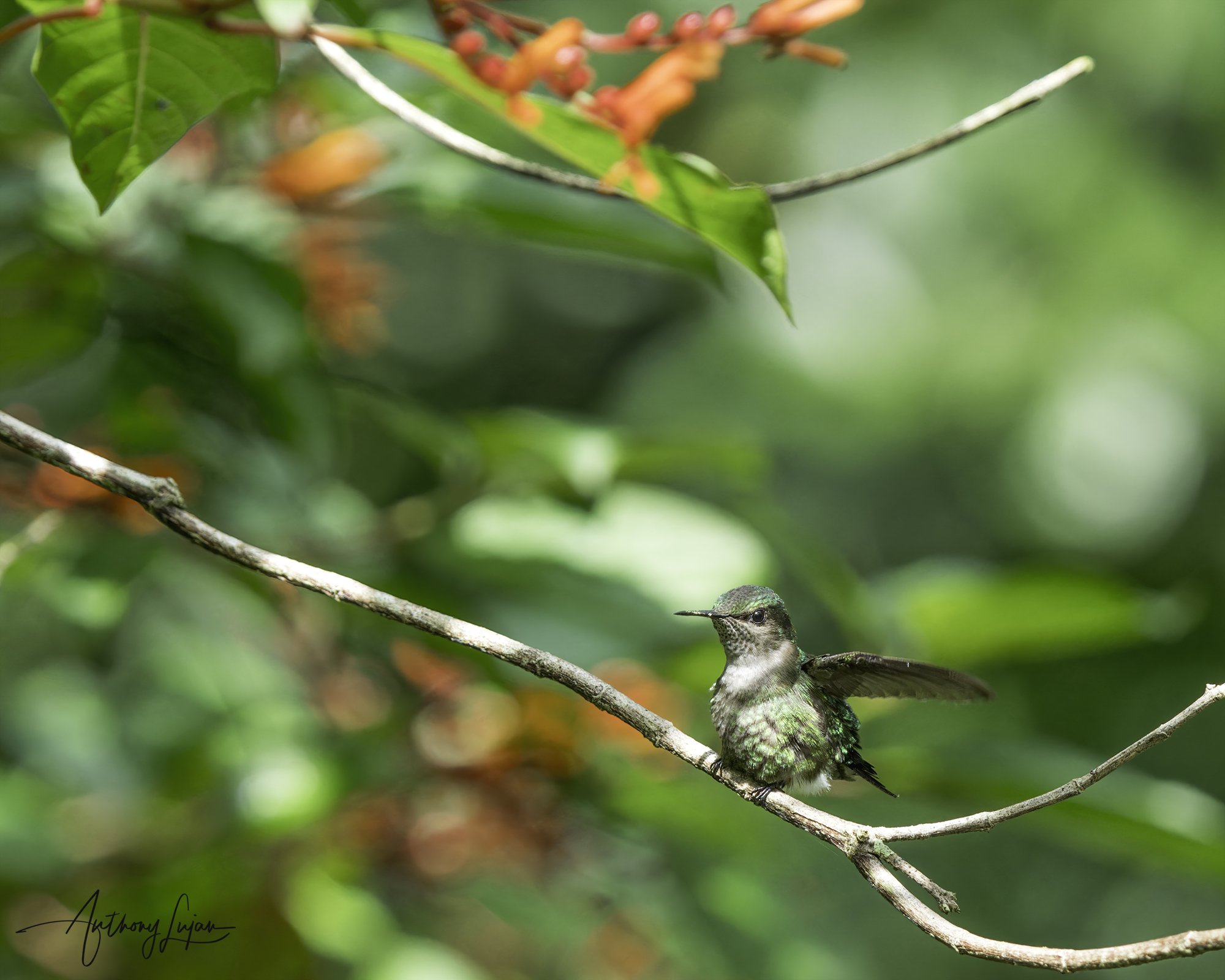
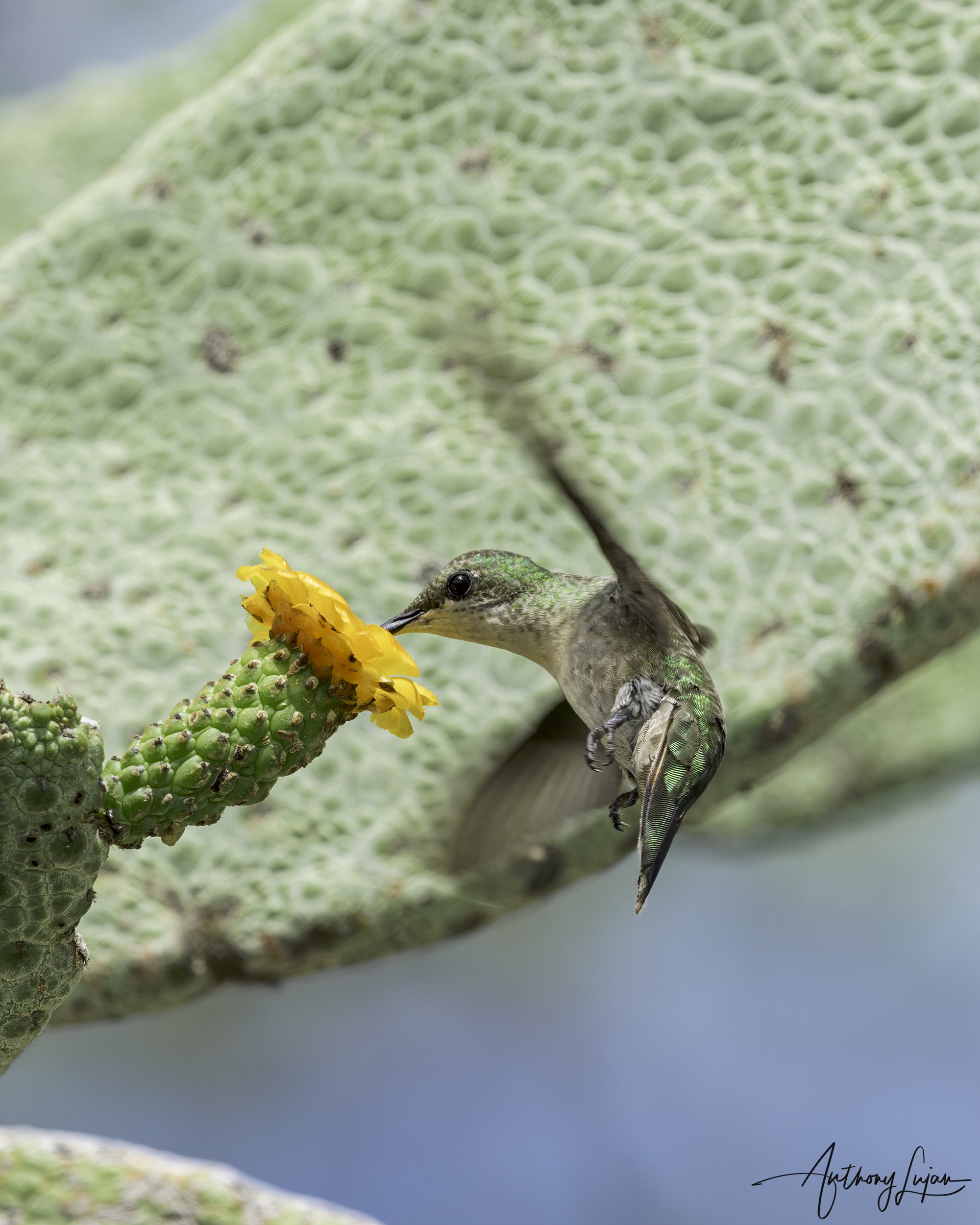
Checkout Anthony’s playlist of this species! Click the top right dropdown to see all the videos.

